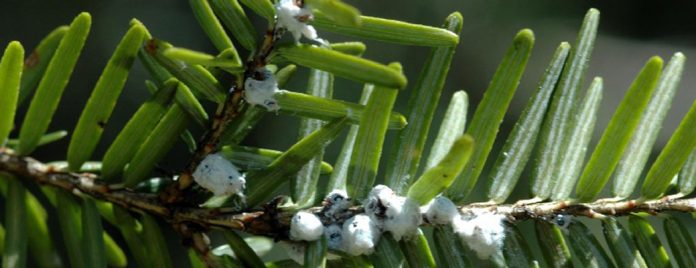COLUMBUS — The Ohio Department of Agriculture (ODA) and the Ohio Department of Natural Resources (ODNR) discovered a hemlock-killing pest in Lake, Geauga and Athens counties. The hemlock woolly adelgid (HWA) is a small, aphid-like insect native to Asia, which threatens the health and sustainability of two hemlock tree species native to the eastern U.S. HWA was first reported in the eastern United States in 1951 near Richmond, Virginia.
States
Today, it is established in portions of 20 states from Maine to Georgia, where infestations cover about half of the range of eastern hemlock. Areas along the Appalachian Mountains have experienced significant mortality of eastern hemlock due to this devastating insect.
The infestations in Lake and Geauga counties were first reported to ODA by a biologist working at a property in the Concord, Ohio, area close to the Lake-Geauga county line.
The Athens County detection was the result of ODNR Division of Forestry survey work that was conducted near the village of Coolville.
HWA is primarily transported by wind, birds and infested nursery stock. HWA was first detected in a forested setting in Ohio in Meigs County in 2012.

Quarantine
At this time, ODA will move to expand its hemlock quarantine, enforced by ODA’s Plant Health division, to include Lake, Geauga and Athens counties, as well as Gallia County due to proximity. Ohio quarantine regulations restrict the movement of hemlock materials from counties known to be infested into noninfested Ohio counties. Ohio’s quarantine law also requires hemlock materials grown in noninfested counties in quarantined states to be inspected before being shipped and have a phytosanitary certificate verifying that the plant material is free of HWA when entering Ohio.
For more information about HWA in Ohio, visit agri.ohio.gov/divs/plant/hwa/hwa.aspx.










